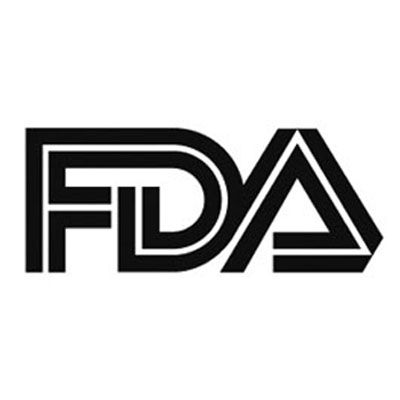FDA’s ODAC to Review Belantamab Mafodotin BLA for R/R Multiple Myeloma
The FDA has announced plans to convene a meeting of the Oncologic Drugs Advisory Committee to review the Biologic License Application for belantamab mafodotin as treated of patients with relapsed or refractory multiple myeloma.

To examine the potential of belantamab mafodotin for the treatment of patients with relapsed or refractory multiple myeloma, the FDA has announced plans to convene a meeting of the Oncologic Drugs Advisory Committee (ODAC) to review the Biologic License Application (BLA) for the drug, GlaxoSmithKline announced in a press release. The meeting will be held on July 14, 2020.1
“We believe belantamab mafodotin and the results from the DREAMM clinical trial programme have significant potential for patients with relapsed/refractory multiple myeloma who have limited treatment options. We look forward to participating in the upcoming advisory committee meeting and working with the FDA to complete its review of the BLA,” said Axel Hoos, MD, PhD, senior vice president and head of Oncology, Research and Development, GlaxoSmithKline, in a statement.
After first receiving Breakthrough Therapy Designation in 2017, the BLA for belantamab mafodotin was granted Priority Review for this indication based on results from the pivotal phase 2 DREAMM-2 clinical trial, which were published in the Lancet Oncology.
In the study, 196 patients were randomly assigned 1:1 to receive either belantamab mafodotin 2.5 mg/kg or 3.4 mg/kg in the intention-to-treat (ITT) population. The overall response rate (ORR) observed in the 97 patients who received the lower dose of belantamab mafodotin was 31% (97.5% CI, 20.8%-42.6%). For the 99 patients who received the higher dose of belantamab mafodotin, the ORR was 34% (97.5% CI, 23.9%-46.0%).2
Responses included very good partial responses, which were observed in 18 patients (19%) in the low dose group and 20% of those who received the higher dose of the drug. Complete responses were achieved in 3 patients in each cohort. In sub-cohorts, which included subjects with cytogenetic abnormalities, high-risk cytogenetics, various myeloma types, extramedullary disease, and those with prior lines of therapy, patients also achieved clinical benefit with belantamab mafodotin.
The median duration of response has not yet been reached after a median duration of follow-up of 6.3 months (interquartile range [IQR], 3.7-7.7). Per investigators estimate, there is a 78% and 87% probability, respectively, that patients who received the 2.5-mg/kg dose and 3.4-mg/kg dose of belantamab mafodotin could have a duration of response that lasts 4 months.
In the low dose cohort, the median progression-free survival was 2.9 months (95% CI, 2.1-3.7) compared with 4.9 months (95% CI, 2.3-6.2) in the high dose cohort. Overall survival data have not yet matured.
At least 1 adverse event (AE) was observed in all study subjects, with the exception of 2 patients who received the lower dose of belantamab mafodotin. Fifty-four percent of patients who received the lower dose of belantamab mafodotin experienced AEs leading to dose delays compared with 62% of patients in the higher-dose cohort. Dose reductions occurred in 29% of patients who were given the low dose and 41% of patients who received the higher dose. Treatment was permanently discontinued in 8% of patients in the 2.5-mg/kg group and 10% of those in the 3.4-mg/kg group. Two patients died during the study, and investigators concluded that these deaths may have been related to the study treatment.
In 18% of patients who received belantamab mafodotin at 2.5 mg/kg, infusion-related reactions were reported. Additionally, 15% of patients who received belantamab mafodotin at 3.4 mg/kg experienced infusion-related reactions. These reactions were predominantly grades 1/2. One patient in the 2.5-mg/kg group experienced a grade 3 infusion-related reaction, which led to discontinuation of treatment.
DREAMM-2 is an ongoing 2-arm, randomized, open-label study, which is exploring the safety, activity, and clinical benefit of belantamab mafodotin at the 2 dose levels. The study enrolled patients with histologically or cytologically confirmed relapsed/refractory multiple myeloma based on International Myeloma Working Group criteria. Patient were required to be at least 18 years of age with and ECOG performance status of 0 to 2, had undergone autologous stem cell transplantation more than 100 days prior to enrolling, or were considered ineligible for a transplant and had disease progression on or after receiving 3 or more previous lines of anti-myeloma treatments.
Belantamab mafodotin is a potential first-in-class, humanized anti-BCMA agent. The drug is currently under investigation in multiple studies. If approved by the FDA, belantamab mafodotin would be the first anti-BCMA treatment available to patients.
References:
1. GSK announces FDA Advisory Committee meeting to review belantamab mafodotin for the treatment of patients with relapsed/refractory multiple myeloma. News release. GlaxoSmithKline. June 22, 2020. Accessed June 22, 2020. https://bit.ly/2Z12Ysq.
2. Lonial S, Lee HC, Badros A, et al. Belantamab mafodotin for relapsed or refractory multiple myeloma (DREAMM-2): a two-arm, randomize, open-label, phase 2 study. [published online December 16, 2019].Lancet Oncol. doi: 10.1016/S1470-2045(19)30788-0.
Gasparetto Explains Rationale for Quadruplet Front Line in Transplant-Ineligible Myeloma
February 22nd 2025In a Community Case Forum in partnership with the North Carolina Oncology Association, Cristina Gasparetto, MD, discussed the CEPHEUS, IMROZ, and BENEFIT trials of treatment for transplant-ineligible newly diagnosed multiple myeloma.
Read More